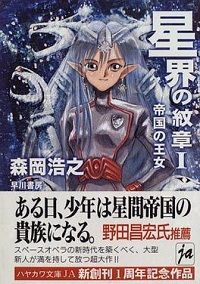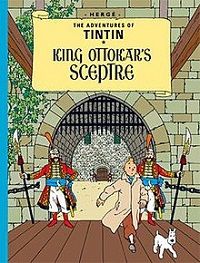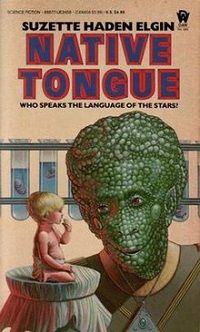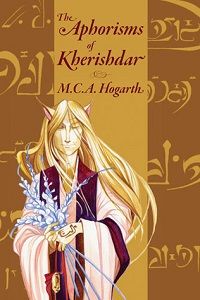
Conlangs: How Many Fictional Languages Are There?
Confession: I am a linguistics nerd. Nowhere near Tolkien-levels, but I will totally judge your science fiction/fantasy novel on whether you have considered languages as part of your world building. As a book lover, conlangs are my love language — that’s Constructed Languages. They are complete yet fictional languages created as part of the worldbuilding in storytelling. You could argue that every language is constructed in some way, but there is a difference between the natural evolution of language in society over many years and constructed language designed purely for a damn good book. You may ask, how many complete fictional (and learnable) languages are there in the world? The answer: more than you think but less than there should be. It’s not an easy task to create a whole new language for the sake of your book. But I’m here to argue that the pay-off is always worth it. If a story comes with its own language, then you know the creator has gone the extra mile in creating a new, immersive experience.
In the Beginning: The Mother of Conlangs
Every linguistics nerd knows that Tolkien is the Master of Conlangs, but he was not the first and he most certainly was not the last. The first recorded conlang was Lingua Ignota, a religious language created by Hildegard von Bingen, a 12th century Abbess later known as Saint Hildegard. Von Bingen created the language for mystical purposes, built mainly from her constructed vocabulary of approximately 1000 nouns, but no specific grammar. Her writing, and indeed her conlang, were used to tell the stories and teachings she claimed to receive from the Divine. Based on her diverse range of skills (including musical composition, poetry, storytelling, and medicinal research), it is not surprising to find von Bingen creating her own language to support the Divine world in which she could comfortably express her philosophy and ideals. Thanks to the level of work given to creating the Lingua Ignota, many conlang academics, like Sarah Higley in Hildegard von Bingen’s Unknown Language, consider von Bingen as the Mother of Conlangs. And I would say, rightfully so.
What Came First: the Language or the Lore?
Constructing a whole new language is not an easy task. It is a lot easier to draw maps of lost cities and create intricate family trees littered with scandal. Language, however, is one of the key foundation stones in any civilisation. Language can show us how a community developed over time, what they considered most important, and how they identified groups and individuals within their community. Language is both the history and the evolution of our story. It is more than a list of words for direct translation. It is the contextual nature of expressing those words with reverence and structure.
Tolkien knew exactly how complex and beautiful languages could be. He initially studied languages for fun in his youth, creating his first language, Naffarin, inspired by both Latin and Spanish. After his return from World War I, Tolkien studied Anglo-Saxon and linguistics at Oxford University, nurturing his skill and passion for natural languages. He loved the idea so much, he wondered what alternative and fantastical languages would exist if elves had lived amongst men. The initial result was two complete languages: Quenya and Sindarin, both to be considered languages of the Elves. Tolkien was so enamoured with the idea of these languages, he felt compelled to write histories and lore to go with them. As Tracey Mumford puts it, Tolkien “invented words and needed speakers.” There were many more languages used through The Lord of the Rings and the entire series, but only Quenya and Sindarin are complete enough to be “learned” by others.
For more history on Tolkien and his love for languages, check out fellow Book Riot writer Senjuti and her list of fascinating facts here.
Where Can I Find More Conlangs?
To learn a conlang, there must be grammatical structure as well as a comprehensive vocab list. It’s not enough to simply substitute words or letters like a cypher to a map. A complete and learnable language has a body and history. There are many fictional languages available in literature (and subsequently on the screen) but few of them are so developed as to make them complete and learnable. Languages like Klingon from Star Trek are now featured on language education software and require their own editor in the literature series. Similarly, Dothraki and High Valyrian are used throughout the series A Song of Ice and Fire by George R.R. Martin. However, to be fair, the greatest promotion for learning Dothraki was made by Jason Momoa from the TV Series, Game of Thrones.
While the majority of conlangs may feel like they come from the pale, stale, and male end of the pool, there are some beautiful contributions to be found further afield.

Crest of the Stars / Sekai no Monshō by Hiroyuki Morioka
This serial novel was initially released in 1996 as a three-volume series and later re-published as a manga with a subsequent anime film and a PlayStation game. The story centres on the son of the president of the Hyde Star System, Jinto. His world is invaded by the Abh empire and as part of his father’s surrender, Jinto’s family is absorbed into Abh nobility. He meets the young Abh princess Lafiel, who is meant to keep an eye on him, but their friendship tends to lead them into trouble. Morioka created an entire language known as Baronh, as well as the accompanying alphabet, Ath, as used within the Abh empire. Almost all of the written text featured in the anime is in Baronh with other incomplete languages used sporadically. Like Tolkien, Morioka has a deep love for linguistics and the social structure around language. The Baronh language is influenced by ancient Japanese language.

King Ottokar’s Sceptre by Hergé
This is the eighth volume in The Adventures of Tintin, the beloved comics series by Belgian creator Hergé. This particular story was written in 1938 as a satirical commentary on the expansionist policies of Nazi Germany and the annexation of Austria. Tintin and his dog Snowy travel to the fictional Balkan nation of Syldavia and are soon embroiled in a plot to overthrow the monarch, Kin Muskar XII. Considered one of the best in the series, Hergé balanced the commentary with realism by creating the fictional nation of Syldavia. However, he recognised that to achieve enough distance to make the story work, he needed to build a complete nation — including a complete and workable language. King Ottokar’s Sceptre was the first of the Tintin series to be adapted for the animated series and included the use of the conlang, thanks to the support from many fans who helped create the learning material for Syldavian. You can read a full analysis of the conlang here.

Native Tongue by Suzette Haden Elgin
Prior to writing the book, Elgin created the conlang Laadan, a woman-centric language, as a social experiment to test the Sapir-Whorf hypothesis. The idea is that the structure of a language can impact the speaker’s worldview. The language was used in her novel, Native Tongue, the first of a trilogy set in a future dystopian American society where the 19th Amendment (women’s right to vote) was repealed in 1991. The core idea was to empower women by giving them a language that focused on their views, their outlook, and their strengths. Think of it as the “female gaze” for languages.

The Aphorisms of Kherishdar by M.C.A Hogarth
This collection of short stories is a deep and immersive dive into the fantastical world created by Hogarth. The stories were originally offered as serials online and have now been published across four volumes of books (The Aphorisms of Kherishdar is the first), with the final two being full-length novels. Hogarth created the language Ai-Naidar to highlight the emphasis on society and community within the stories, with special note to the role of language in society. The stories are fascinating, but I love the way Hogarth has used language to create the stories from the words up.
Stories are just words put together in a way that appeals to our emotions and creativity. Language is the story behind the words, the melody to the lyrics. A strong constructed and complete fictional language can tell us more about a character than a long backstory. From culture to heritage, from the environment to small things we hold dear, language is the backstory. For more information about constructed languages, you can find more information and like-minded people at conlangs.com – including a beginner’s guide and tips for creating your own conlang!














